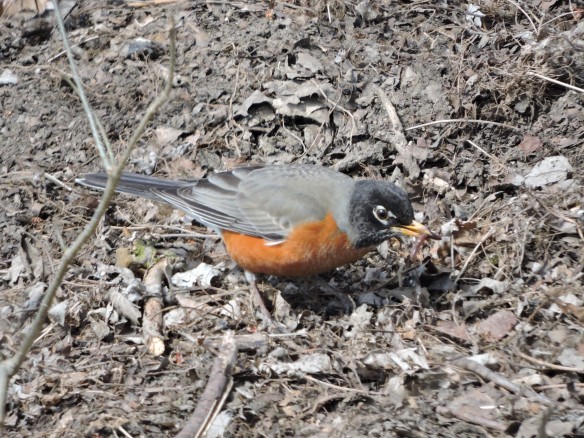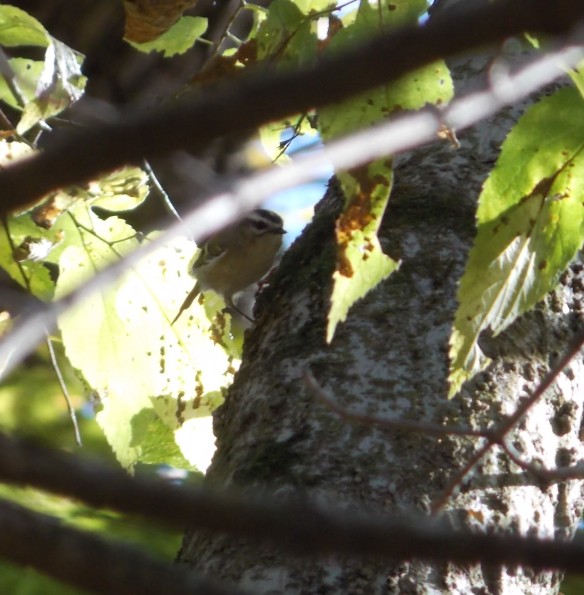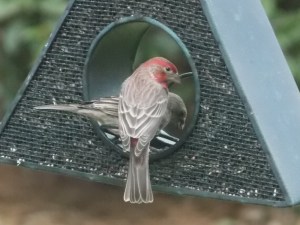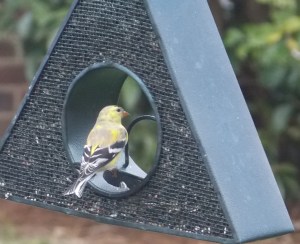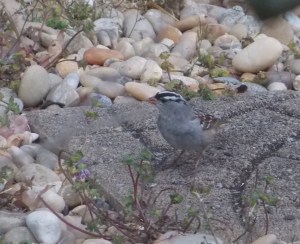Way back in March (almost two months ago now, holy cow) I received an email from the USGS with a certificate attached inside:

It was for the report of the banded Cooper’s Hawk I found in New Mexico!
The government shutdown ended, and so they were able to tell me that this lady was at least 6 years old and had been banded in nearly the exact same place as I saw her in January. My first banded bird report!
Later on, I did in fact go birding again locally, even though it’s been ages since I updated this blog. I have been dutifully 5MRing with some nice results thus far.
In early April I went to the Purdue woodlot to enhance my year list. A number of the earliest of spring migrants were passing through. It seems as though Ruby-crowned Kinglets like the one above, their Golden-crowned brothers, and several other species all appear together at once. Seeing one is a good sign that some of the others are also around.
The Hermit Thrush is one of this group of collaborative migrants. It has been a pretty good year for them, with one even making a brief stay in my backyard for a new addition to that list.
I always thought that the PFW woodlot would be great habitat for Winter Wrens. The forest floor is strewn with leaf litter and fallen logs. On the day of my visit I specifically tried to find this bird, since it too travels with the ones above, and because I had never seen one at this particular location.
Bingo! Don’t you love it when your hunch turns out to be right? This is a new bird for my Purdue hotspot as well as my 5MR.
I thought that the tree cavities would also make good hiding spots for owls. But the only ear tufts I found in one turned out to be something else. Oh well, can’t win them all.
The other interesting mammal I came across was this dark morph Fox Squirrel. This color variation is common north of Allen County, even to the point of being the expected phenotype in many areas, but they are still not very numerous in Fort Wayne.
Speaking of squirrels, an Eastern Gray Squirrel has been hanging out in my yard for the past week. These are even less common here than the dark ones. It is a new species for my house! They are smaller, quicker, and much more wary than their beefy Fox Squirrel cousins.
While we’re on the subject of Sciuridae, I had another new squirrel addition to my 5MR last weekend on a visit to Franke Park: several American Red Squirrels. It seems like as squirrel size decreases, attitude increases, and these guys prove the rule. I now have six squirrel species in my 5MR this year, including another sighting of Southern Flying Squirrel that may be colonizing an oak tree in my yard!
Now that the arboreal rodents are out of my system, I will talk a little more about the next wave of early migrants, which included this Baltimore Oriole on my Franke Park trip. This guy was scenically eating nectar in the flowers of this ornamental tree, so I had to stop and watch.
The true purpose of my trip was to try and get my first warblers of the year. It was disappointingly quiet, but I did hear a Yellow Warbler on my way in and not much else. I expected at least to stumble across the ubiquitous and classic early eastern warbler the Yellow-rumped, but there were disappointingly few birds around. However, as I hiked around the pond a little yellow guy zoomed close by my feet to offer itself as the winner of the First Warbler Seen Of The Year: a Hooded Warbler!
Look at this handsome dude! I had only ever seen one previously almost seven years ago, and not in Allen County. So count it for new patch bird, new 5MR bird, new green bird, and new county bird! It gave me some great looks too, probably because it was much more concerned with the Blue Jays harassing it than it was with me. I am taking this as a good sign for things to come yet this spring!



















